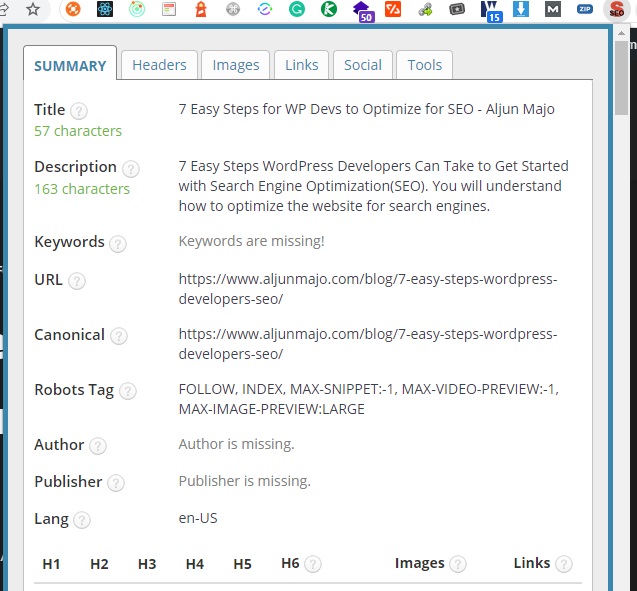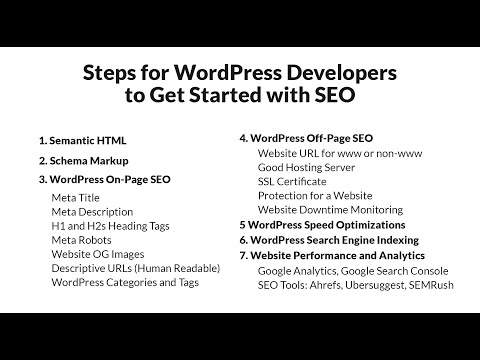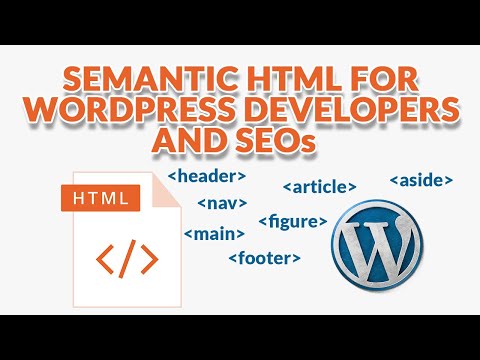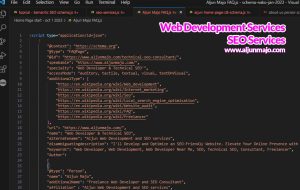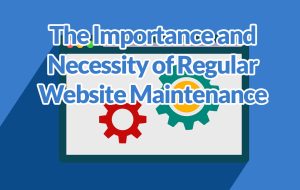A Comprehensive WordPress SEO Strategy for Beginners (Step by Step with Example)
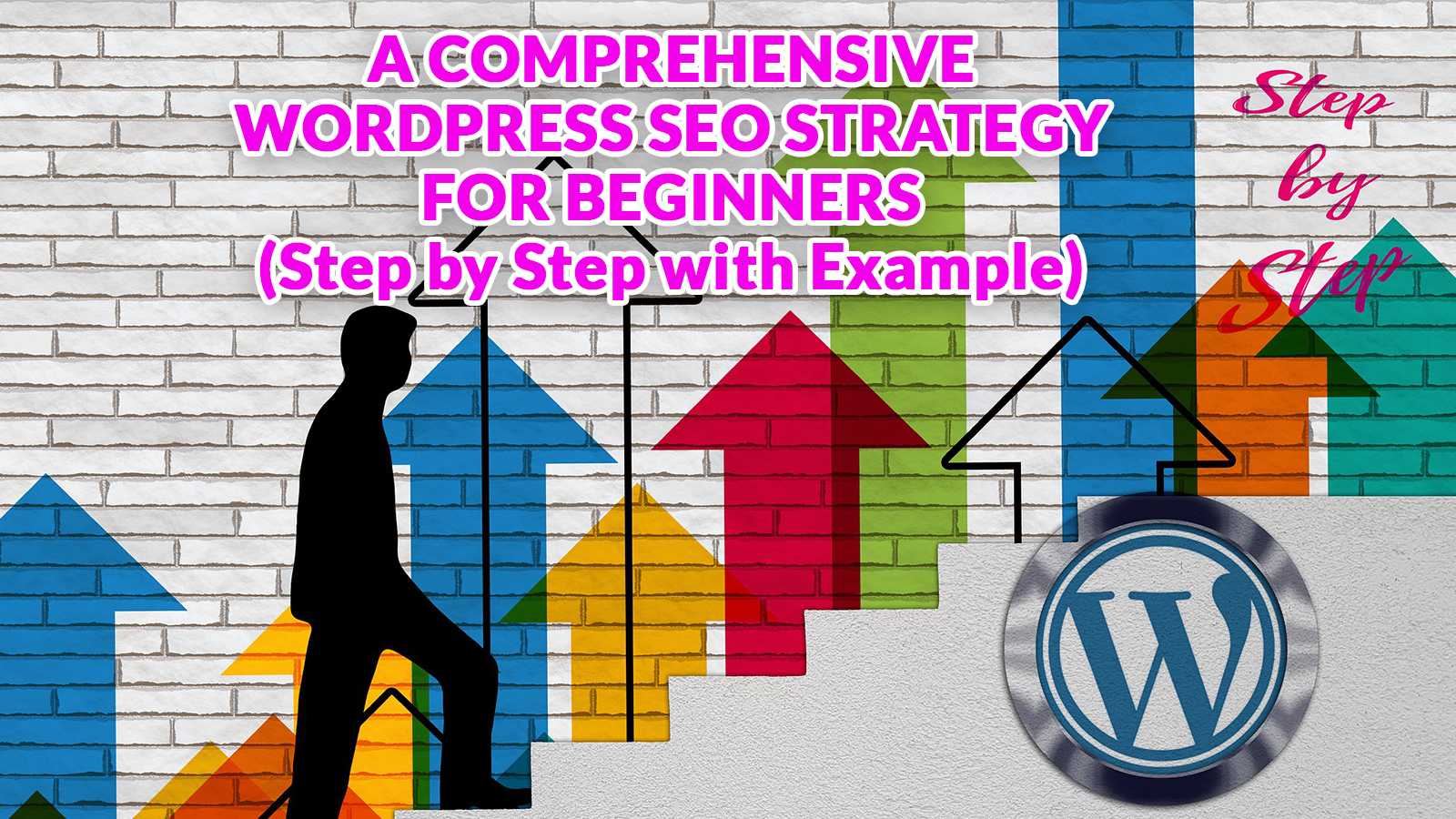
Yes, WordPress is generally considered to be search engine friendly. It is written in clean, valid code. In addition, it uses structured data (such as header tags and alt attributes for images) that makes it easier for search engines to crawl and understand the content on your website. However, you can still do more to make your site visible to search engines and social media networks.
In addition, WordPress has several built-in features that can help improve your website’s search engine optimization (SEO). For example, you can easily create and edit title tags and meta descriptions for your pages and posts, and you can use tags and categories to organize your content in a way that is helpful for both users and search engines.
Best WordPress SEO Plugins
Many WordPress-seo plugins can also help you optimize your website for search engines, such as Yoast and Rankmath.
Overall, while WordPress alone does not guarantee a high ranking in search results, it can certainly make it easier to optimize your website for search engines and improve your chances of ranking well.
Before proceeding with this post, it is necessary to understand how to use and install WordPress plugins. It will be useful to have a site where you can install plugins. It will also be helpful to have a basic understanding of search engines and how they rank websites. But even if you don’t, you may still follow along, and the knowledge will still be helpful. And I can explain things as best I can.
FREE offer: Need a WordPress website and Learn WordPress SEO?
If you want to have a WordPress website and learn SEO but need help installing WordPress and free SEO WordPress plugins, and don’t have the money to pay for your hosting server, you can join this Facebook Group (SEO & Web Development Tutorials Philippines ) to learn more about the details.
To make things easier, I’ve created a table of contents to help you navigate my ultimate WordPress SEO tips.
Table of Contents
- Best WordPress SEO Plugins
- FREE offer: Need a WordPress website and Learn WordPress SEO?
- 7 Easy Steps for Ultimate WordPress SEO Strategy for Beginners
- 1. Semantic HTML
- 2. Schema Markup
- 3. On-Page WordPress SEO
- 4. Off-Page WordPress SEO
- 5 WordPress Speed Optimizations
- 6. WordPress Search Engine Indexing
- 7. Website Performance and Analytics
- If you want to build a WordPress website and Learn WordPress SEO
- Final Thoughts: WordPress SEO
- FREE SEO tool:
7 Easy Steps for Ultimate WordPress SEO Strategy for Beginners
1. Semantic HTML
Semantic HTML markup is essential in SEO since it helps search engine crawlers better understand the content and context of a web page. It also improves a website’s accessibility and usability, which can assist in boosting its search engine rankings. Semantic HTML markup gives content structure and meaning, making it easier for search engine crawlers to interpret and index. Semantic markup also helps to improve a website’s overall user experience, which is an essential component in SEO.
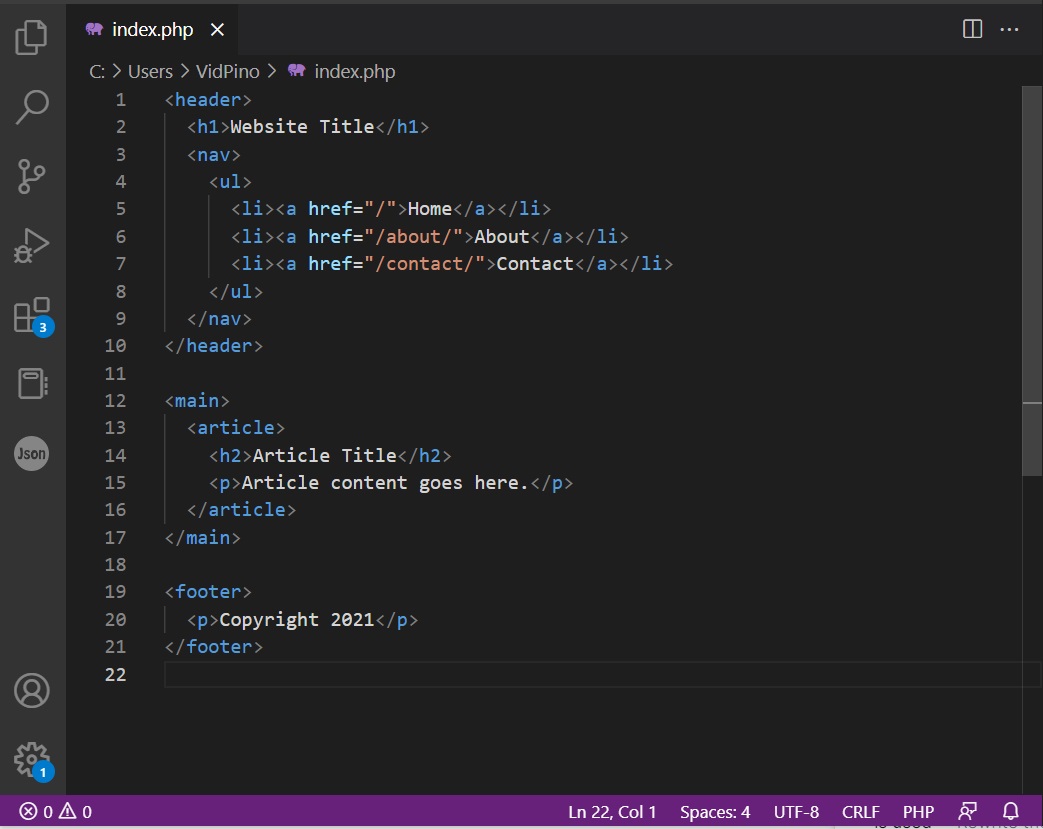
In the example above, the “header” element wraps up the website’s title and navigation menu. The “main” element is used to wrap the main content of the page, and the “footer” element is used to wrap the page’s footer content. The “article” element is used to wrap up a single article or blog post. The “h1″ and “h2” elements are used to denote headings, and the “p” element is used to wrap paragraphs of text.
2. Schema Markup
Schema markup is a type of structured data markup that is utilized to improve search engine results. It is a type of code added to a web page to offer search engines additional information about the website, such as the page’s FAQ, local businesses, sitelinks searchbox, articles, and videos. This information helps search engines better comprehend the page’s content, which can result in more relevant search results. As a result, schema markup can help your website rank higher in search results. It can also enable your website to appear in rich snippet results, which are enhanced search results that include additional information, such as images and reviews.
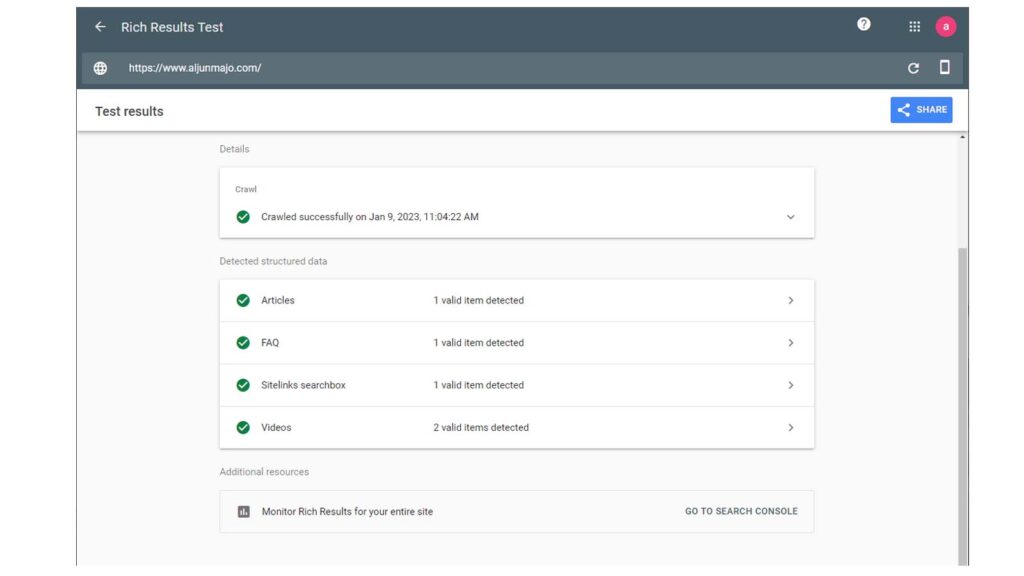
3. On-Page WordPress SEO
Meta Title
A meta title is the title of a webpage specified in the page’s HTML code. It is usually displayed in the search engine results page (SERP) as the clickable headline for a given result, displayed at the top of the browser window, intended to provide a brief, concise description of the page’s content. It is one of the factors that search engines use to rank and index web pages, and it is important for usability, SEO, social, and sharing.
The meta title should be unique for each page on a website and should accurately reflect the content of the page. It should be concise, typically no more than 60 characters long, and should include relevant keywords for the page.
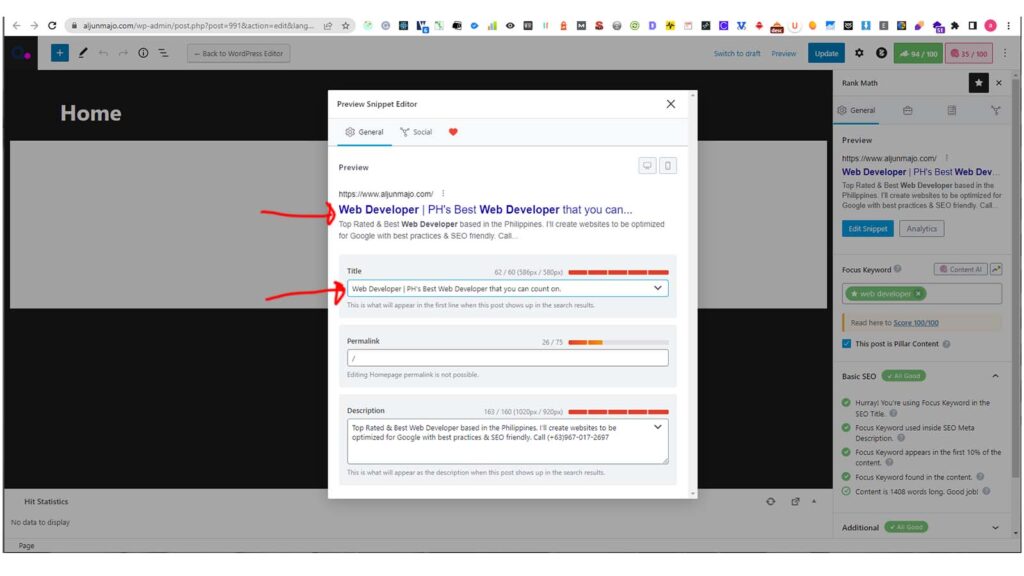
Meta Description
A meta description is an HTML attribute that summarizes a web page’s content briefly. It is typically a short paragraph of text displayed in search engine results when the page appears in the list and is intended to give users an idea of what the page is about and whether it is relevant to their search. Search engines use meta descriptions to give users more information about the page and can help improve click-through rates to the page.
The meta description should be unique for each page on a website and should accurately reflect the content of the page. It should be concise, typically no more than 160 characters long, and should include relevant keywords for the page.
The meta description is not a ranking factor for search engines, but it can influence how a page appears in the search results. Therefore, a well-written meta description can help attract clicks from users and improve a website’s overall visibility and traffic.
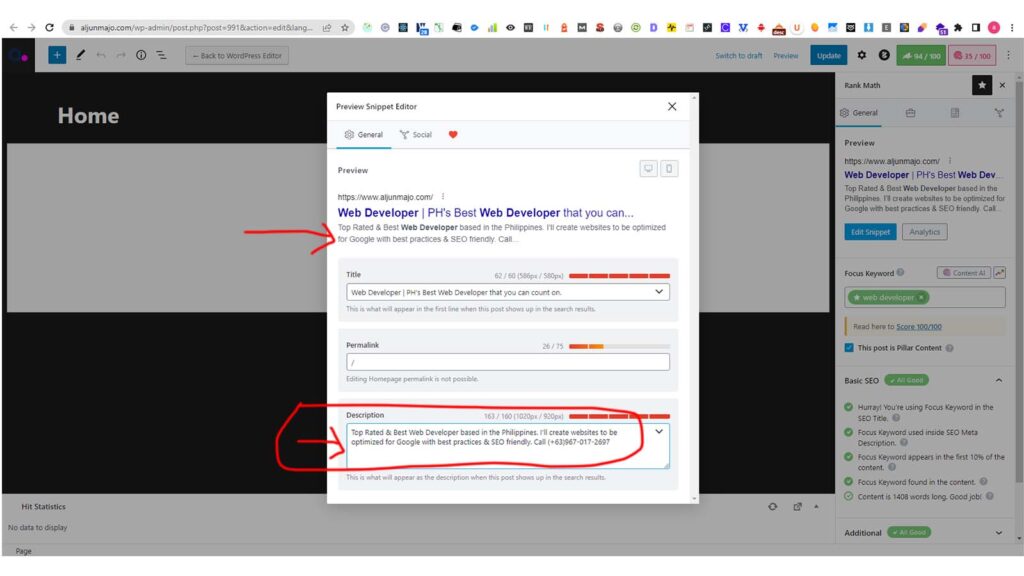
H1 and H2s Heading Tags
Headings, specifically H1, H2, and H3 tags, play an essential role in on-page SEO as they provide a clear hierarchy for the content on the page, making it easier for search engines to understand the main topics and subtopics. For example, include your main keyword in H1, don’t just copy the page title and only one H1 tag per page, and add H2, H3 tags as you want just be sure they’re relevant to the content. They also help users scan and navigate the page more quickly. Additionally, keywords included in headings can help search engines understand the relevance of the content on the page, helping to improve its ranking for those keywords.
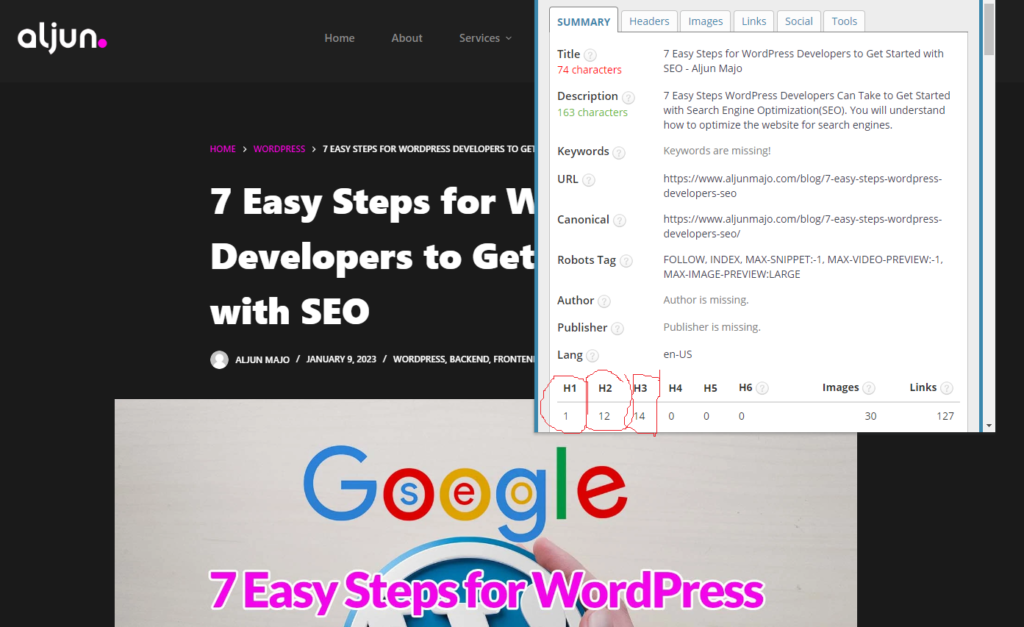
Meta Robots
Meta Robots is an HTML tag that allows webmasters to control how search engine robots crawl and index the content of their websites. The “meta robots” tag can be used to tell search engine robots(like Google crawler or Google bots) not to index a page. For example, a webpage with the “noindex” directive set will not be included in search results, while a webpage with the “nofollow” directive set will not pass on any link equity to other pages.

The “meta robots” tag is typically included in the head section of HTML code for a webpage. The content property value can be a combination of the following directives:
“index”: Indicates that the page should be indexed by search engines.
“noindex”: Indicates that the page should not be indexed by search engines.
“follow”: Indicates that search engines should follow the links on the page.
“nofollow”: Indicates that search engines should not follow the links on the page.
Website OG Images
OG images, or “Open Graph images,” are images that are specifically designated for use in social media when a webpage is shared on social media platforms. They are specified using the “og:image” property in the HTML code of a webpage and are intended to be used as the main image when the page is shared on social media.

The Open Graph protocol is a system for marking up content on a webpage so that it can be shared on social media platforms in a way that is more engaging and informative. In addition to the “og:image” property, the Open Graph protocol also includes other properties such as “og:title” for the title of the page, “og:description” for a short summary of the page’s content, and “og:url” for the URL of the page.

Using OG images and the other Open Graph properties can help improve how a webpage is displayed when it is shared on social media, making it more likely to be clicked on and shared by users.
Descriptive URLs (Human Readable)
WordPress Permalinks are the permanent URLs to your individual pages and posts, as well as your category and tag archives. By default, WordPress uses web URLs that have question marks and lots of numbers in them. However, using permalinks, you can make these URLs look more meaningful and descriptive to human readers. As a result, Permalink or permanent link can improve the readability of your website, and it can also help in improving your site’s WordPress SEO.
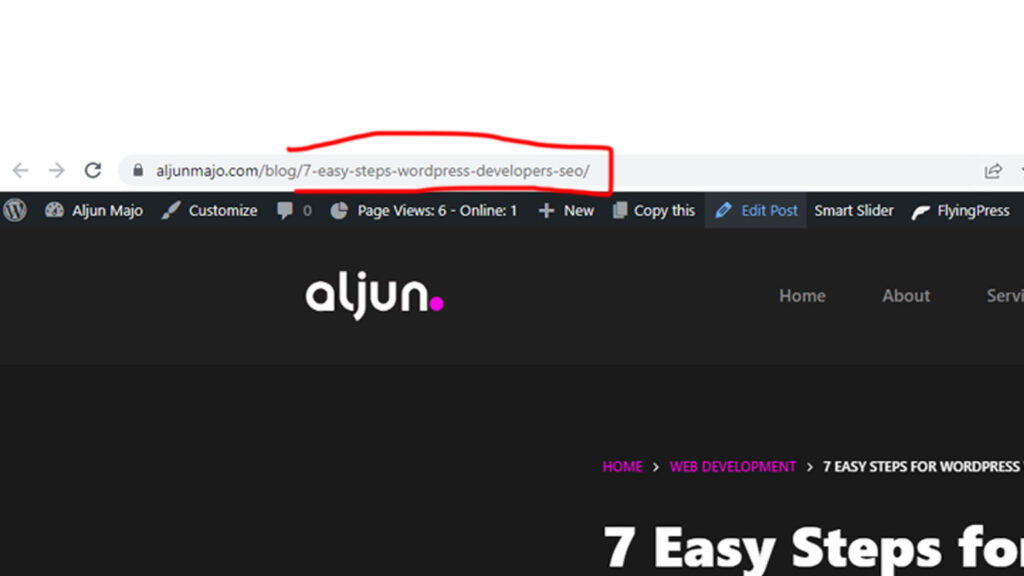
In WordPress, the permalink is the web address that links to your blog post or page. The permalink settings in WordPress allow you to control the structure of these URLs.
By default, WordPress uses the “plain” permalink setting, which generates URLs with the date and the title of the post or page. So, for example, a post with the title “Hello World” might have a URL that looks like this:
"https://example.com/?p=123"However, you can change the permalink structure to use more descriptive URLs that are more user-friendly and easier to remember. For example, you could use the “post name” permalink setting, which would generate URLs like this:
"https://example.com/hello-world/"To change the permalink settings in WordPress, go to the “Settings” menu and click on “Permalinks.” From there, you can choose from various permalink structures or create a custom structure using tags.
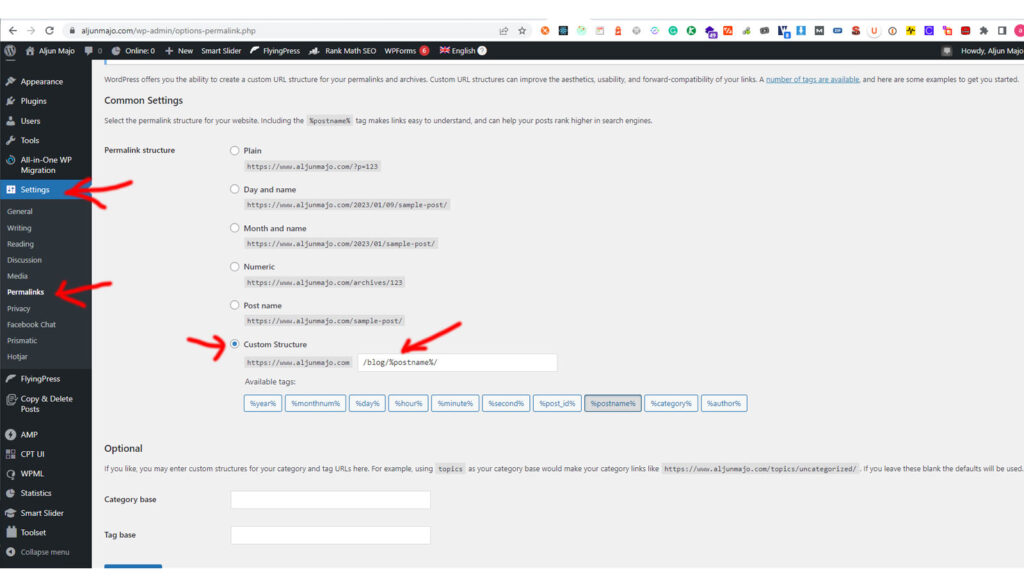
WordPress Categories and Tags
WordPress categories and tags are two different ways to group and organize content on a WordPress website. Categories are used to group posts and pages into broad topics, while tags are used to narrow down the focus of a post or page to a specific keyword or phrase.
Categories are used to group content into broad topics. For example, a Web Development website might have categories for “Full Stack Web Development,” “Web Server,” and “Website Security.”
Tags are used to describe specific details within a post. For example, a blog post about a “WordPress SEO” might be tagged with “SEO,” “WordPress,” “RankMath,” and “sitemap.”
They both help you organize and navigate your site but serve different purposes.
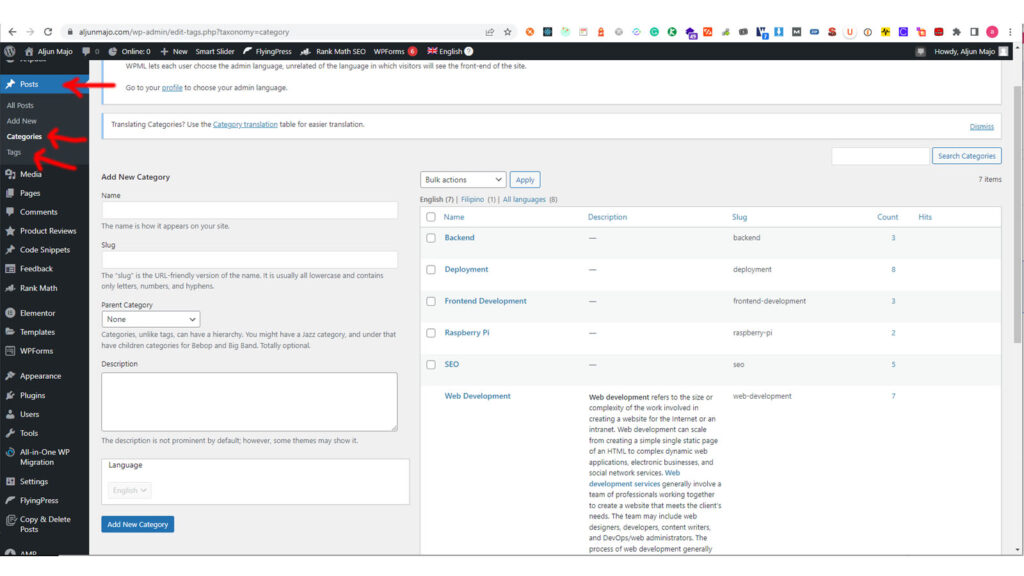
4. Off-Page WordPress SEO
Website URL for www or non-www
URLs are an important factor in SEO. Checking the www or non-www version of a URL is important because search engines may see each version as a separate website. This could lead to duplicate content issues, which can affect your website’s ranking. It’s also important to ensure that all URLs are consistent and direct users to the same page, regardless of whether they use the www or non-www version.
If you use both “www” and “non-www” versions of your URL (e.g., “https://www.aljunmajo.com/blog/7-tips-wordpress-seo/” and “https://aljunmajo.com/blog/7-tips-wordpress-seo/“), search engines may treat them as separate pages, which can dilute your link equity and potentially cause other issues.
To avoid these problems, it’s a good idea to choose one version of your URL and stick with it. Most websites use the “www” version, but either will work as long as you are consistent.
To ensure that you use a consistent URL structure, you can set up a 301 redirect from the non-preferred version to the preferred version. This tells search engines that the non-preferred version should be treated as a permanent redirect to the preferred version and helps to ensure that all link equity and ranking signals are consolidated onto a single URL.
Good Hosting Server
Good hosting is important for a website because it can affect its performance, speed, and security. A good hosting provider can help ensure that the website is always available and accessible for visitors. It also provides the necessary resources to ensure the website runs smoothly and quickly. A good hosting server can also provide features like regular backups, malware protection, and secure data storage to help keep your website safe from malicious attacks.
When choosing a hosting provider, there are a few key factors to consider:
Performance: A slow or unreliable hosting server can negatively impact your website’s loading speed and performance. This can lead to a poor user experience and can even cause visitors to leave your site before it has a chance to load.
Security: A good hosting server should have strong security measures in place to protect your website and your visitors from cyber attacks and other threats.
Reliability: A reliable hosting provider ensures that your website is always available and can be accessed by your visitors. This is particularly important for e-commerce sites, as downtime can lead to lost sales.
Pricing: Consider your budget and choose a provider with a good balance of features and affordability. Be sure to read the fine print and understand what is included in the price, as some providers charge extra for certain features.
Scalability: If you expect your website to grow in the future, choose a provider that offers scalable plans and resources to accommodate that growth.
Support: A good hosting provider should offer excellent customer support to help you with any issues with your server or website.
Overall, a good hosting server is essential to improve your WordPress SEO and to have a successful website, as it helps ensure that your site performs well, is secure, and is always available to visitors.
SSL Certificate
Why is SSL essential on a WordPress for SEO
Securing your WordPress website with SSL is essential for SEO because Google has stated that HTTPS is a ranking factor. This means that secured websites with HTTPS may receive a slight ranking boost in the search results.
In addition to being a ranking factor, HTTPS is also important for SEO because it helps protect your visitors’ privacy and can increase trust in your website. This can lead to increased traffic and potentially higher conversion rates.
While HTTPS is just one of many factors that Google considers when ranking websites, it is still an essential factor that can help improve your search engine rankings and overall user experience.
Protection for a WordPress Website
Website security and WordPress SEO tools are essential in WordPress SEO because it helps protect your website from malicious attacks and can help you rank higher in search engine results. Google and other search engines use security as a ranking factor, so having a secure website will help you rank higher. Additionally, website security can help protect your visitors from malicious attacks and can help you build trust with your visitors. In a world where data breaches are becoming more common, website security is essential for keeping your website and visitors safe.
There are many WordPress security plugins available to help protect your WordPress website from attacks. Here are two that I often use:

Wordfence is an all-in-one security solution that provides website security scanning, firewall protection, real-time monitoring of malicious attacks, and more. It also includes two-factor authentication for added security. Additionally, Wordfence is free to use, easy to install, and regularly updated with new features.
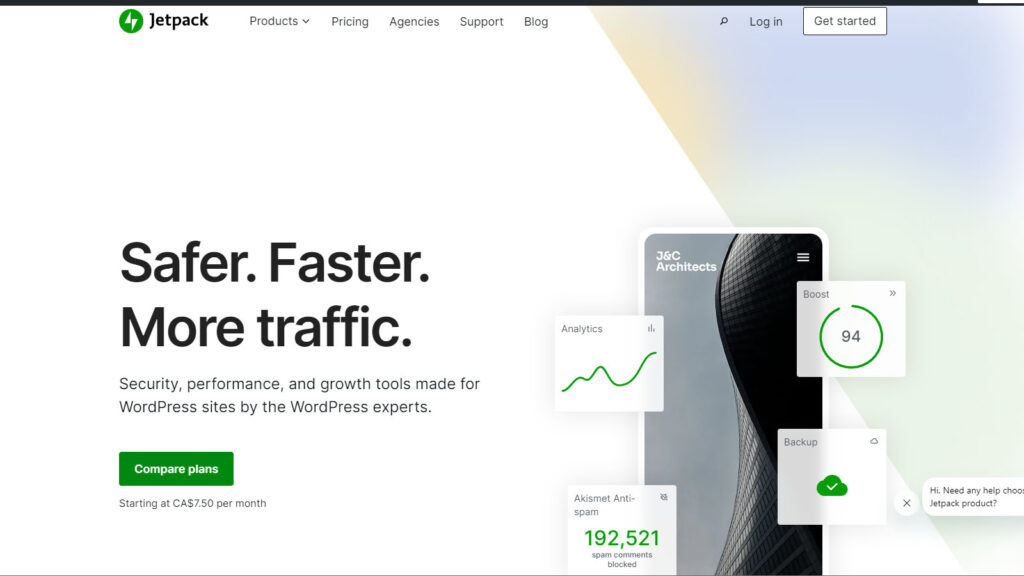
Jetpack is one of the most popular WordPress plugins. It provides a range of powerful features that can help make your WordPress site more secure, faster, and more user-friendly. Jetpack also allows you to improve your site’s performance, track your site’s stats, protect it from malicious attacks, and more. It has many features that can help you to make your WordPress site more successful. Jetpack is also easy to use and is regularly updated with new features, making it an excellent choice for WordPress users of all levels.
WordPress Website Downtime Monitoring
Aside from website security, Jetpack provides other benefits.
Jetpack is a plugin that offers website uptime/downtime monitoring as one of its features. When you activate the uptime monitoring feature in Jetpack, it will check your website’s uptime every 5 minutes and send you an email alert if your site goes down.
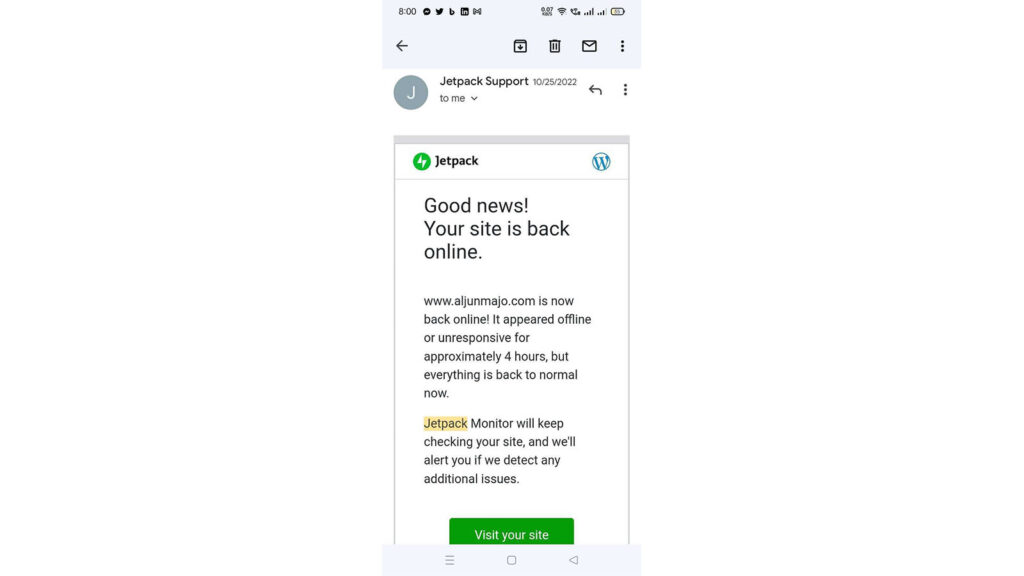
In addition to uptime monitoring, Jetpack offers various features such as security, performance optimization, and backup services. This makes it a comprehensive plugin that can help improve your website’s overall functionality and security.
Jetpack is a well-rounded plugin that can be a good choice for many WordPress websites. However, it’s still a good idea to research and compare different options to find the best solution for your specific needs.
5 WordPress Speed Optimizations
Website loading speed is essential for WordPress SEO because it can affect the user experience of your website. For example, a slow-loading website can be frustrating for users and may lead to a higher bounce rate (the percentage of visitors who leave your website after only viewing one page). A high bounce rate can be a negative signal to search engines, indicating that the website is not providing a good user experience.
In addition, page loading speed is a ranking factor for Google. A faster-loading website may have an advantage in search engine rankings over a slower-loading website.
Therefore, optimizing the speed of your WordPress website can not only improve the user experience for your visitors, but it can also improve your search engine rankings.
If you’re unfamiliar with WordPress or non-techy, I recommend reading my other article, WordPress Performance Optimization Made Easy: Tips and Tools for Non-Web developers.
6. WordPress Search Engine Indexing
WordPress is a content management system (CMS) that allows you to create and manage a website. However, if you want your WordPress website to be found by search engines like Google, it needs to be indexed. When a search engine indexes your website, it means that it has read and stored your website’s content in its database. This allows search engines to understand the content on your website and show it to users when they search for relevant terms.
To ensure that search engines index your WordPress website, you need to ensure that you have these two on your website the sitemap and robots.txt:
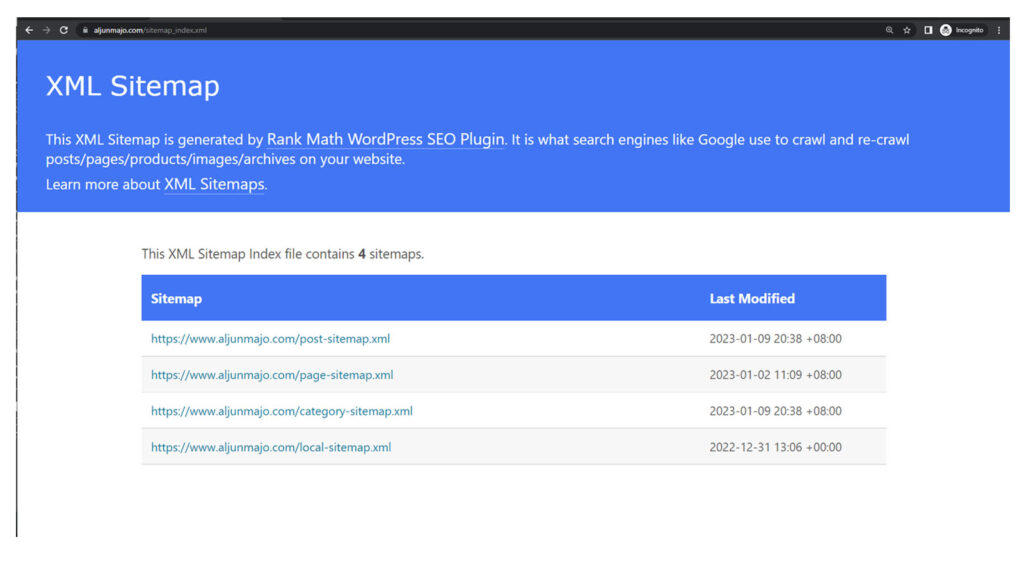
Sitemap.xml: Sitemaps are important because they provide an easy way for search engine crawlers to find and index all website pages. They ensure that no page is ignored and that all pages are correctly indexed. Sitemaps also allow website owners to include additional information about each page, such as when it was last updated and the importance of the page relative to other pages on the website. This helps search engines rank pages in search results more accurately. Additionally, sitemaps can help website visitors quickly find the information they are looking for.
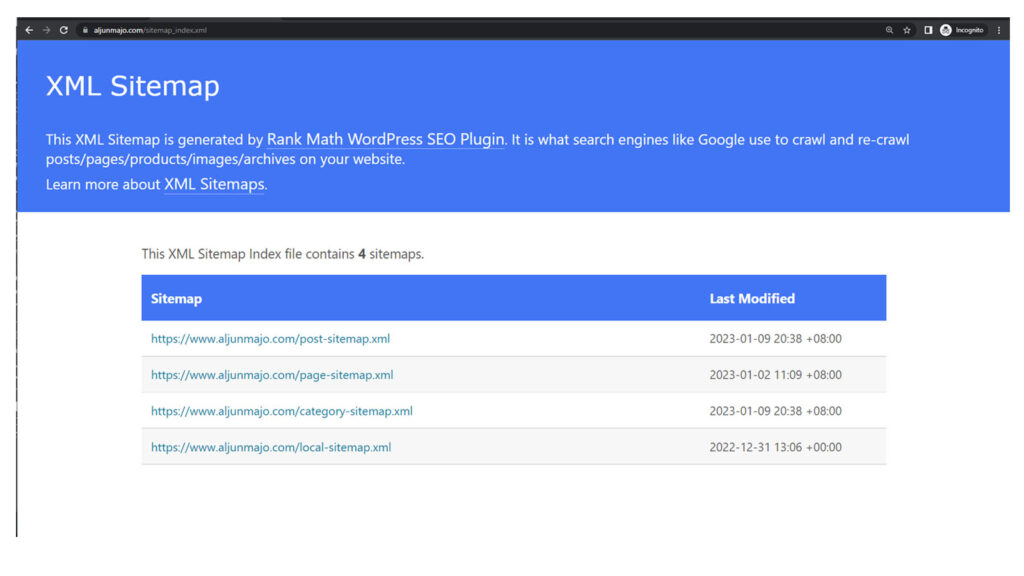
Robots.txt: Robots.txt is important because it tells search engine crawlers which pages on a website they should and should not index and which URLs the crawler can access on your site. Additionally, it can help reduce the server load by preventing crawlers from indexing pages that don’t need to be indexed. Robots.txt can also specify a page’s crawl frequency, which can help ensure that search engines are not overloading a website with requests.
7. Website Performance and Analytics
Google Analytics
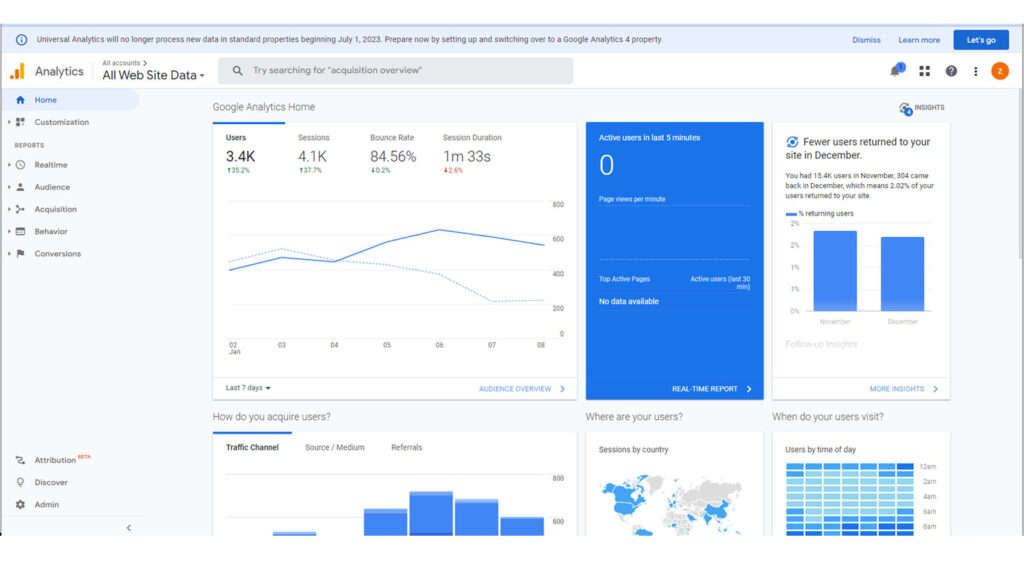
Google Analytics is a free web analytics service provided by Google that tracks and reports website traffic. It is important to use Google Analytics because it can help you do the following:
Understand your website’s traffic: Google Analytics provides detailed data on your website’s traffic, including information on the number of visitors, the pages they visit, and their location. This can help you understand how people use your website and identify trends and patterns.
Identify and track your website’s goals: Google Analytics allows you to set up goals and track conversions on your website. This can help you understand what actions are most valuable to your business and how well your website meets these goals.
Improve your website’s performance: Using the data from Google Analytics, you can identify areas for improvement and make changes that can help increase traffic and conversions.
Overall, Google Analytics is an important tool for website owners because it provides valuable insights into how your website is being used and can help you make informed decisions about improving its performance.
Google Search Console
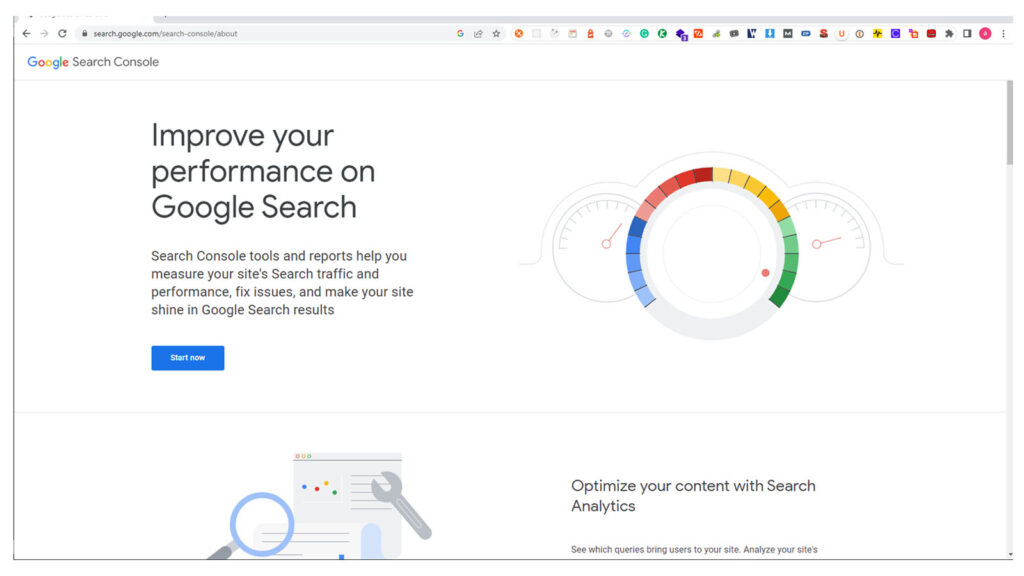
Google Search Console is a free tool provided by Google that helps you monitor and maintain your website’s presence in Google search results. It is important to use Google Search Console because it can help you do the following:
Understand how your website performs in Google search results: Google Search Console provides data on how often your website appears in Google SERPs and which queries are driving traffic to your website. This can help you understand what is working well and where there may be room for improvement.
Identify and fix technical issues: Google Search Console can alert you to technical issues on your website, such as crawl errors or security issues. By fixing these issues, you can ensure that your website is running smoothly and is accessible to both users and search engines.
Improve your website’s search engine ranking: Using the data from Google Search Console, you can identify areas for improvement and make changes to your website to help it rank better in search results.
Overall, Google Search Console is an important tool for website owners because it provides valuable insights into how your website performs in search results and can help you identify and fix issues affecting your website’s ranking.
If you want to build a WordPress website and Learn WordPress SEO
If you want to have a WordPress website and learn SEO but need help installing WordPress and don’t have the money to pay for your hosting server, you can join this Facebook Group (SEO & Web Development Tutorials Philippines) to ask questions about how to have a website.
Final Thoughts: WordPress SEO
SEO is a big part of this post. Therefore, SEO is challenging for me as a Web Developer, and it takes a long time to see results. Check and follow the steps mentioned above to make it easier for search engines to index your WordPress website. However, this does not guarantee that your content will rank at the top of the Search Engine Results Page (SERP). You must have defined goals and tactics for SEO strategies for your content to rank well in SERPs. Your content should be high quality, your website’s user experience should be good, and you should perform keyword research. You should also include these few things to make your website stand out on search engine results pages.
FREE SEO tool:
A tool that clearly displays all meta tags/data and main SEO information. We hope you can better manage and improve your WordPress SEO and visibility on the Internet by using this tool => SEO META in 1 CLICK
